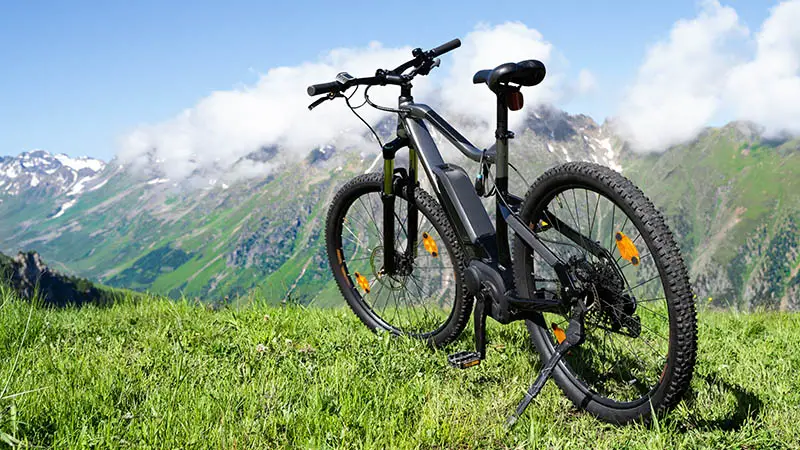Electric Bikes vs Regular Bikes
As with many things these days that involve technology, bikes have seen a significant change since the first bike, designed by German Karl Von Drais, hit the road in 1817. From a vehicle with no pedals, a wooden frame and leather-covered tires mounted on iron rims and wooden wheels, the bicycle has seen many variations since that time.
Contents
In 1895, American inventor Ogden Bolton Jr. was credited with one of the first battery-powered bicycle designs. Today, electric bikes (or E-Bike) are a common sight on bike trails and streets as people look to make their rides more efficient and sometimes easier.
There are two versions of e-bikes on the market, the pedelec, in which a small motor assists the rider’s pedaling. The other (Speed Pedelec or S-Pedelec) is more of a moped-style that has a high powered motor and integrates a throttle.
Whether you are a fan of the old-school pedal power or the motorized modern-day version, there are plenty of options on the market, but as for which one is right for you? Continue reading as we break down electric bikes vs regular bikes.
Appearance
As far as the optics of electric bikes vs regular bikes there isn’t too much of a difference, at least at first glance. Mostly, the bikes are similar in the sense of two wheels, handlebars, seat, frame, pedals, and brakes.
However, e-bikes also have an added motor, battery pack, and depending on the style, possibly a display screen. Users will also notice that there is a thumb throttle on an e-bike that activates the motor to help power the bicycle forward when you find pedaling to be a challenge.
Mechanics

The mechanical components of that of electric bikes vs regular bikes are relatively the same aside from the motor and the battery pack.
E-bikes come equipped with either a crank motor or a rear hub motor. The crank motor assists turning the pedals, which moves the wheels. Often found on high-end variations, crank motors offer torque and power transfer more naturally as the power is sent through the crank.
A hub motor, found on the more average price point bikes, drives the wheel itself.
Speed
There is a common thought that an e-bike is faster than a regular bike, however, that may or may not be true, depending on how fast you can physically pedal. Most e-bikes top out at between 20-28mph.
An average individual can usually pedal at a top speed of 15mph, while an athletic person will usually achieve nearly 20mph. A competitive cyclist who bikes in events such as the Tour de France, can reach an average speed of 25mph and a top speed of 35-45mph depending on the conditions.
Once an e-bike reaches its top speed, the engine will cut out leaving the rider to rely solely on their own pedaling strength and ability should they choose to go faster.
Riding Experience
Depending on who you ask, some people believe that riding an e-bike is “cheating”, especially with speed. Whereas a regular bike relies on your pedal power, an e-bike’s motor kicks in as soon as you pedal, making the action of cycling easier. Using the “pedal assist” option, allows riders to determine just how much work their legs will do to power the bike, versus how much the motor will assist.
Maintenance and Repairs

Aside from the battery, the motor, and the display unit, the components of an e-bike and a regular bike are the same, so the maintenance is very similar. Whether it be a tire replacement or brake adjustment, the repairs can be done at your local bike shop or home and will fall around the same price point.
As for the motorized components, you would need to visit an e-bike specialist. While defects are rare with the electrical system, they can happen and if that is the case, they will probably fall under the warranty that comes with the e-bike to cover the repairs.
Most of the batteries tend to last approximately 1,000 cycles (depending on how far you ride) and will cost between $500-$800 to replace. As e-bikes are often ridden at higher speeds and longer distances than most other bikes, they wear out faster.
It is also important to note the climate in which you ride your bike as colder, wet weather can impact the effective capacity of the battery. If you ride your bike in the winter, invest in a Neoprene cover to keep the bike (especially the battery, motor, and display) dry.
Electric Bikes vs Regular Bikes – Which Is Best For You?
Some people consider e-bikes as cheating, whereas others who struggle with long distances or maintaining significant speed on a traditional bike, still want to enjoy the activity and benefits of cycling. So how do you decide which one is best for you? There are a few factors you should consider.
Cost
One reason people veer away from considering an e-bike is the cost. While they are usually more expensive than your traditional bike, the price point for e-bikes has dropped significantly over the years as they become more popular and market-friendly.
One other consideration for the cost of an e-bike is that they are cheaper than the alternative of driving a car/motorcycle. Should you want to make a quick run to the store, loading up an e-bike with seat bags to carry your groceries (or other items) is cheaper and more eco-friendly than hopping in the car.
Co-op Cycles CTY e2.2 Electric Bike
- An upgrade from the CTY e2.1 with a more powerful motor for improved acceleration and hill climbing
- Low stand-over height design makes the bike easy to get on and off and easy to stabilize while standing at a stop
- Shimano e6100 motor is the strong, silent type, with more torque than that of the CTY e2.1, offering 3 pedal-assist modes plus a walk mode
- Shimano E8010 504Wh battery extends your range and is equipped with an ABUS lock so you can feel confident parking it around town
- Shimano hydraulic disc brakes deliver reliable, nuanced stopping power
It is hard to pin down an exact price point when comparing electric bikes vs regular bikes as there are various factors at play. Are you using your bike on simple street commutes or are you off-roading? Or, are you riding a long distance or taking a quick zip around town?
Are you an experienced or new rider? How much space do you have to store your bike (at home or work, etc)? These are things to consider when purchasing either your electric bike or your traditional pedal power regular bike as they will come into determining the purchase price.
However, with that being said, the entry-level price for an e-bike is approximately $1,500, while many fall into the $2,500-$5,000 range.
Entry-level prices for regular bikes (road or mountain) can be found as cheap as a couple hundred dollars at your local department or big box sports store. Mid-range bikes will run between $1,000-$3,000 and then increase in price from there for high-level competitive cyclists.
Fitness Level
While the obvious answer to which bike is better for your fitness (regular bike), there is also the school of thought that an e-bike will allow you to ride further and longer, therefore having a significant impact on your fitness level. One study shows that those who ride e-bikes actually get more exercise during the week than traditional bike riders.
Clearly, a five-mile ride on an e-bike differs from a regular bike, especially if you are using the motor to assist you. Should you decide not to use your motor to assist you, some will argue that pedaling an e-bike is harder as you have the added weight of the motor and battery pack.
One perk of electric bikes vs regular bikes is that elderly or individuals with physical ailments can still enjoy a bike ride and improve their levels of fitness, whereas they may not peddle a regular bike for as long without struggling.
Co-op Cycles CTY e1.1 Electric Bike
- Low stand-over height design makes the bike easy to get on and off and easy to stabilize while standing at a stop
- Upright riding position gives you great visibility; adjustable stem lets you fine-tune the cockpit to fit you
- Bafang 250W hub-drive motor offers a smooth ride with 5 pedal-assist modes, plus a walk mode
- Bafang 43V/450Wh battery comes equipped with a lock so you can feel confident parking it around town; can be removed to charge at your desk at work or in your garage
- Hydraulic disc brakes deliver reliable stopping power
Commute / Distance
While it is great to go for a long-distance ride on the weekend, the end-result is often a nice shower at the end of your sweaty ride. However, for commuting to work, especially to a job on the other side of town, nobody wants to show up exhausted and drenched in sweat. This is an advantage of electric bikes vs regular bikes, riders can go further, and faster while not working as hard & also saving time.
Newbies
Regardless of age, there are always people who are new to riding a bike and for some, the activity can be daunting and scary. Knowing that they don’t have to pedal as hard or for as long may entice new cyclists to become more active. Some consider e-bikes to be more fun, which is ultimately the reason we should ride bikes of any variation.
Cargo
While regular bikes allow you to add various forms of either front or rear baggage racks, an e-bike will also allow you to do the same with specialized add-on kits, but with an increased weight load. This is beneficial when going for long bike trips (camping) or grocery shopping or even transporting your kids around.



